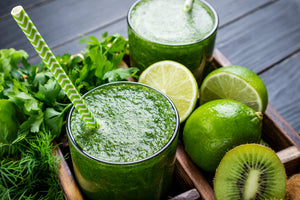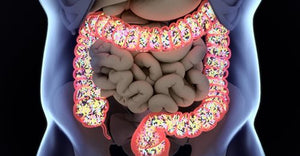Fat – The Sixth Taste?

Any good chef will tell you that fat makes food taste better. A plain baked potato is nothing compared to one with a pat of butter and a dollop of sour cream. And let’s face it: a bowl of unadorned pasta isn’t all that appetizing until you add some garlic and olive oil, or a creamy alfredo sauce.
It makes sense that we humans are hard-wired to enjoy fatty foods. Compared to proteins and carbohydrates, which both provide four calories per gram, fats provide nine calories per gram, making them more than twice as energy-dense.
To our prehistoric ancestors, who likely faced intermittent periods of food scarcity, fat may have been a prized bounty. In the modern world, however, where we have constant access to an inexpensive food supply, our penchant for fatty foods (and sweets!) may cause us to consume more calories than we expend—particularly when procuring large amounts of these foods no longer requires hours of hunting and gathering, but rather, just a hop in the car for a quick trip to the supermarket.
Researchers have determined that there are five basic tastes humans are capable of discerning:
- Sweet
- Salty
- Bitter
- Sour
- Savory or umami.
It is speculated that each of these tastes serves a specific role in helping us distinguish nutritious and “safe” foods from poisonous ones.
The sweet taste implies carbohydrate; umami hints at the presence of protein and amino acids (specifically, glutamate); bitter may indicate the presence of harmful compounds; salty suggests important minerals and electrolytes; and sour may help keep us away from foods that have spoiled.
The idea that there are just these five basic tastes is as entrenched as was the concept of our solar system having nine planets. However, just as the reclassification of Pluto as a “planetoid” has forced a rewriting of astronomy textbooks, new research suggests that there may be a sixth taste, and that this unique sensation comes from fat. In order to distinguish this taste sensation from the rest, and to provide clues as to its meaning, scientists have coined the word oleogustus. “Oleo”implies oil, while “gustus” is borrowed from the Latin, gustatus, for “sense of taste.”
It’s no secret that fat makes other foods delicious, but what, exactly, is the taste sensation of fat, by itself?
It may depend on the makeup of individual fatty acids in a particular fat.
For example, butyric acid, found in butter (especially in rancid butter), is bitter and unpalatable on its own. But consumed as a whole food, with all its component fatty acids, butter is sublime.
Participants in the study in which researchers identified the “fat taste” initially classified the fat sensations as being bitter, but when they were asked to limit that category to samples that presented only bitter flavor, the fats comprised their own group. It’s not surprising that the participants perceived the fats as being bitter. Good quality extra-virgin olive oil, when fresh, can be quite bitter. Some varieties have a pinch to them, and even produce a “burning” sensation in the back of the throat when tasted by themselves. (Some foodies deliberately seek this out, as it may indicate a higher polyphenol content in the oil.)
The different taste sensations are distinguished by specific receptors on cells located in taste buds at the back and sides of the tongue. Ultimately, these taste receptors send feedback to the brain, which could play a role in satiety versus the desire to keep eating.
Taste perception can also be affected by hormones, which could explain changes in food preference and intake in the short-term, as well as over time. As an adult, you might enjoy the taste of certain foods you avoided as a child, or maybe the opposite has happened, and you’ve lost the appreciation you had for a specific food in the past.
Sometimes, cravings for something sweet, salty, or fatty, can be a sign that your body genuinely needs whatever nutrients the foods in those categories might provide. But when you’re already well-nourished and are simply experiencing the ups and downs of the blood sugar rollercoaster, or are eating to ease emotions, remember that, along with those hard-wired desires for sugar and fat, we humans also have higher cortical function, which allows us to override our baser instincts. We have a physiological need for adequate nourishment, but we also have white knuckles and willpower!
Sources
1.Running CA, Craig BA, Mattes RD. Oleogustus: The Unique Taste of Fat. Chem Senses. 2015 Jul 3.
2.Iwata S, Yoshida R, Ninomiya Y. Taste transductions in taste receptor cells:basic tastes and moreover. Curr Pharm Des. 2014;20(16):2684-92.
3.Gravina SA, Yep GL, Khan M. Human biology of taste. Ann Saudi Med. 2013 May-Jun;33(3):217-22
- David Brady







Comments 0